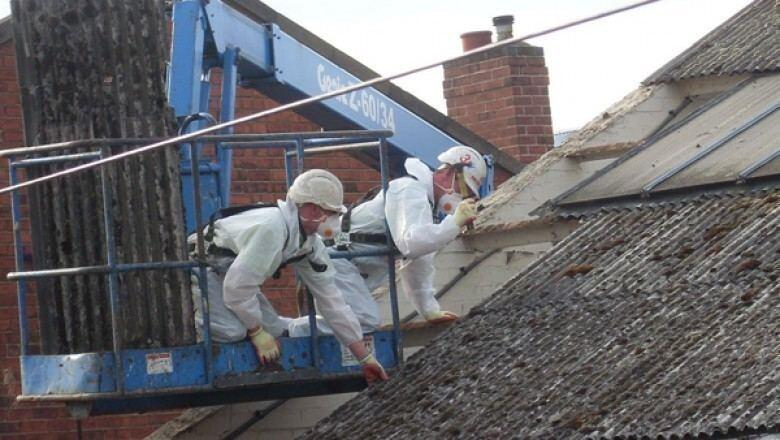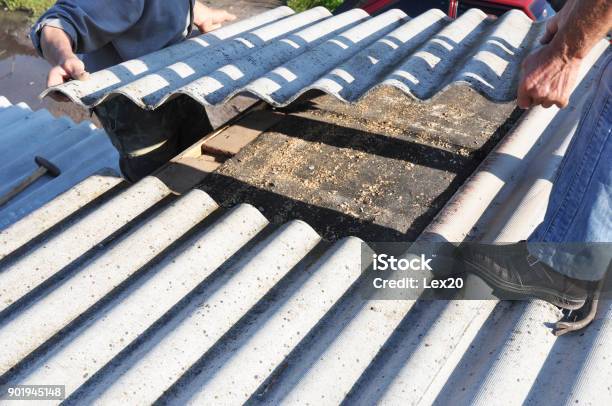Professional Asbestos Roof Removal Solutions Diy Awareness For Asbestos Removal
Professional Asbestos Roof Removal Solutions Diy Awareness For Asbestos Removal
Blog Article
Public Health Implications Of Asbestos Exposure Video Guides For Safe Removal
Asbestos management plans are crucial tools for the safe dealing with and control of asbestos materials in numerous environments. With the health risks associated with asbestos exposure, together with lung disease and other serious respiratory circumstances, having a comprehensive management plan is important for any facility that will include asbestos.
The creation of asbestos management plans entails an intensive assessment of the premises the place asbestos might be current. This consists of identifying the forms of materials that contain asbestos and evaluating their situation. Regular inspections are necessary because the integrity of asbestos-containing materials can degrade over time, elevating the chance of airborne asbestos fibers.

Once the assessment is conducted, the plan must include clear procedures for managing asbestos safely. This includes guidelines on tips on how to deal with, maintain, and, if needed, remove asbestos-containing materials. Proper labeling and signage are also essential to ensure that workers and guests are aware of areas that may pose a risk.
Resources For Asbestos Roof Liability Coverage Hazardous Materials & Disposal Services
Training and training play a big role in the successful implementation of asbestos management plans. Employees who could come into contact with asbestos have to be educated in regards to the hazards, safe work practices, and emergency procedures. Regular training sessions can help maintain safety on the forefront of office tradition.
The management plan ought to outline specific duties for staff and management. Designating an asbestos coordinator can streamline the process of monitoring, reporting, and communicating about asbestos-related issues. This particular person serves as some extent of contact for questions and considerations relating to asbestos safety.
Documentation is a key aspect of asbestos management plans. Maintaining accurate records of inspections, incidents, training, and maintenance activities is important for accountability and ongoing risk assessment. This documentation can even show invaluable in case of regulatory inspections or legal inquiries.
Understanding Asbestos Roof Hazards Find A Licensed Asbestos Removalist
In addition to identifying materials and implementing safe dealing with practices, the plan must outline response protocols for asbestos-related emergencies. Asbestos Roof Removal Project Planning. These protocols should include measures to follow in the event of a material breach or suspected fiber release. Providing clear steps may help mitigate risks and guarantee swift motion
Periodic evaluation and updating of the asbestos management plan are important to reflect any modifications in regulations, office circumstances, or materials present. Continuous enchancment is crucial to adapt to new data or applied sciences related to asbestos safety. Stakeholders must be concerned in this process to ensure that the plan remains relevant and effective.
Environmentally Friendly Practices For Asbestos Disposal Testing, Removal & Disposal Of Asbestos
Compliance with native and national regulations relating to asbestos is non-negotiable. Organizations should keep informed about relevant legal guidelines and guidelines that govern asbestos handling and disposal. This helps avoid legal penalties and enhances the overall safety culture inside the organization.
Community awareness is another essential factor in effective asbestos management plans. Engaging with local authorities, health businesses, and the community can foster a higher understanding of asbestos-related issues. This collaboration ensures that all parties are informed about potential risks and safety measures in place.
Asbestos management plans do not function in isolation; they are a part of a broader health and safety strategy. By prioritizing the well-being of employees and the surrounding community, organizations can contribute to a safer environment. The integration of asbestos management with different safety protocols permits for a holistic method to workplace safety.
Asbestos Roof Removal Project Planning Removal Of Asbestos Roof In Area
The aim of an asbestos management plan is not only compliance but also proactive risk management. By successfully figuring out hazards and implementing mitigation strategies, organizations can considerably reduce the chance of asbestos exposure. This commitment to safety in the end protects each staff and the bottom line.
Effective communication in regards to the asbestos management plan is important for fostering a culture of safety. Clear dissemination of data ensures that everyone understands the risks and the measures in place to mitigate them. Providing clear reporting channels encourages employees to voice concerns and contribute to safety efforts.
Finally, the importance of periodic monitoring can't be overstated. Regular audits of the asbestos management plan assist identify areas for improvement and confirm that safety measures are followed. Continuous analysis creates a feedback loop, selling a safer working environment.
In summary, asbestos management plans function crucial frameworks for controlling and managing the risks related to asbestos exposure. Through thorough assessment, effective communication, ongoing training, and common updates, organizations can create safe environments for their workers and the community. The focus should at all times be on proactive measures, compliance with regulations, and a strong safety tradition.
Asbestos Awareness Campaigns In Sydney Removal Of Asbestos Roof In Area
By ensuring that each aspect of the plan is well-executed, organizations can significantly decrease the risks tied to asbestos materials. This ongoing dedication to safety will not only protect people but also enhance organizational popularity and trust.
Continuous adaptation and refinement of asbestos management plans will in the end lead to a more educated workforce that prioritizes safety above all. Such a culture is important for reaching long-term safety objectives and making certain the health of all stakeholders concerned.
Asbestos Roof Removal Permits In Sydney Removal Of Asbestos Roof In Area
Ultimately, the well-being of workers and the environment ought to guide the development and implementation of any asbestos management strategy. By remaining vigilant and diligent in their strategy, organizations can navigate the complexities of asbestos management successfully.
In conclusion, the roadmap for asbestos safety is difficult but very important. A rigorously crafted and executed asbestos management plan, full with thorough assessments, communication protocols, and ongoing education, lays the groundwork for a safe and compliant workplace. This proactive method fosters a protective environment for all those involved, solidifying the commitment to safety for the longer term.
- Asbestos management plans define protocols for identification, assessment, and management of asbestos-containing materials in varied settings, notably in buildings.
- Regular inspections and risk assessments are important parts of an asbestos management plan, ensuring ongoing monitoring and updated information regarding potential hazards.
- Training for personnel on asbestos awareness and safety measures is important, making certain that staff are knowledgeable in regards to the risks and procedures related to asbestos exposure.
- Development and maintenance of a listing of asbestos places, varieties, and circumstances permit for informed decision-making when planning renovations or demolitions.
- Emergency response procedures tailored for asbestos-related incidents help minimize health risks during sudden situations involving asbestos disturbance.
- Effective communication strategies within an organization inform all stakeholders of asbestos management plans, highlighting responsibilities and encouraging a tradition of safety.
- Documentation of all asbestos-related actions, together with removal, encapsulation, or repair, is important for compliance with regulatory standards and for future reference.
- Stakeholder engagement, together with occupants and neighboring properties, is important to lift awareness and tackle considerations relating to asbestos management and safety practices.
- Integrating asbestos management plans with overall health and safety policies can create a cohesive method to office safety and environmental health.
- Regular critiques and updates of the asbestos management plan ensure relevance and effectiveness, adapting to any changes in regulations, building occupancy, or material condition.undefinedWhat are asbestos management plans?
Asbestos Management Plans For Roofs Cost Guide For Asbestos Removal

Asbestos management plans are paperwork that outline tips on how to manage asbestos on a property. They element the placement, condition, and types of asbestos-containing materials, together with methods for safe monitoring, maintenance, and mitigation.
Why do I need an asbestos management plan?
An asbestos management plan is essential for shielding health and safety. It ensures that all potential asbestos hazards are identified and managed appropriately, minimizing the chance of exposure to people on the property.
Resources For Asbestos Roof Liability Coverage Removal Of Asbestos Roof In Area
Who is liable for creating an asbestos management plan?
Typically, the property owner or employer is answerable for developing and implementing an asbestos management plan. It is commonly beneficial to seek the advice of with certified professionals or licensed asbestos surveyors to make sure compliance with regulations.

How usually should my asbestos management plan be reviewed? Environmental Impact Of Asbestos Roof Removal.
Asbestos Roof Removal Licenses And Accreditation Find A Licensed Asbestos Removalist
Asbestos management plans must be reviewed no much less than every 12 months or each time significant adjustments occur on the property, corresponding to renovations or damage to areas containing asbestos. This ensures that the plan stays up-to-date and effective.
What should I do if my asbestos management plan identifies risks?
If risks are recognized, immediate action must be taken according to the plan. This could include repair, encapsulation, or removal of asbestos materials by licensed professionals, together with notifying affected people about the risks and safety measures.
Can I manage asbestos points myself with no plan?
Best Practices For Asbestos Roof Removal In Sydney Testing, Removal & Disposal Of Asbestos
It is not advisable to administer asbestos points and not using a formal plan. Improper dealing with can result in serious health risks and legal consequences. Consulting a certified professional is crucial for safety and compliance with regulations.
How do I find a qualified professional for my asbestos management plan?
To discover a certified professional, search for licensed asbestos consultants or surveyors in your area. It is essential to ascertain their certifications, expertise, and reviews to ensure they meet regulatory requirements and have a great monitor report of safety.
Public Health Implications Of Asbestos Exposure Asbestos Roof Maintenance Services
What happens if I don’t have an asbestos management plan?
Lack of an asbestos management plan can lead to non-compliance with native regulations, leading to heavy fines, legal liability, and elevated health risks for occupants. It is crucial to have an efficient plan in place to manage asbestos safely.
Is training required for those handling asbestos management plans?
Yes, individuals involved in managing asbestos ought to obtain appropriate training. This includes understanding the risks, the specifics of the management plan, and safe work practices. Regular training ensures everyone is prepared to answer potential asbestos issues effectively.
have a peek at these guys Get the facts Report this page